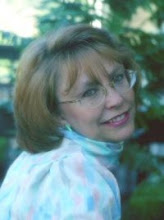Welcome national bestselling author Maia Chance, author of mystery novels that are rife with absurd predicaments and romantic adventure. Her latest releases are Come Hell or Highball (St. Martin’s Minotaur) and Beauty, Beast, and Belladonna (Berkley Prime Crime). Maia lives in soggy Bellingham, Washington, where she plays laundress and cook to two imperious children and takes secret solace in vintage cocktails. She blogs at maiachance.com and loves to socialize at facebook.com/MaiaChance.
Researching a Mystery Novel, Family-Style.
Researching my Fairy Tale Fatal mystery series means reading old travelogues and novels, studying antique fashion plates, poring over period railroad timetables and restaurant menus, and—oh, yeah!—traveling in Europe. My job is SO HARD. (Kidding.)
Beauty, Beast, and Belladonna is set in 1867 in the Périgord region of France. I always knew the story would concern the “true history” of my all-time favorite fairy tale, “Beauty and the Beast,” but beyond that, I wasn’t sure . . . until, that is, I read about the prehistoric cave art in the Vézère Valley. These caves—the most famous one is Lascaux—are decorated with Paleolithic pictures of animals. Animals, you know . . . as in beasts? Bingo. There was my angle, because the idea of pairing “Beauty and the Beast” with the painted caves seemed so juicy.
Only catch was, I had, um, never been to the Périgord. So I packed up the Fam—my husband, my mom, and my two little kids—and off we went!
Getting There. Okay. Maybe it wasn’t quite simple as “and of we went!” Those of you who have traveled with little kids know what a gigantic production it is. For example: Bring your own car seats OR deal with the caked-on barf of someone else’s kid on the rental car company’s car seat. Buy tons of French snacks, which are inevitably buttery and flaky and which will grease and flake up everyone’s clothing. Oh, and those miniscule, multi-part toys your kids insisted on packing? You lost half of them in the airplane on the way over. (True story: once I retrieved my son’s toy car five rows back on an airplane. You get to know people on the plane when you’re traveling with the Tinies.)
The landscape. So. We managed to get ourselves to the Périgord, more or less in one piece. There was the three-hour stretch on the expressway when my two-year-old daughter wouldn’t stop screaming unless allowed to eat one and only one bite out of every French Pringle in the can, but we are trying to forget that. Oh my word, it is beautiful in that neck of the woods. Rushing rivers, rocky outcroppings, thick forests. It’s beautiful in a near-eerie way, at least for me, with its ruined castles and chateaux melting back into the hills. In fact, more than once my husband, mom, and I argued about whether a heap of stones in the distance was a natural formation or a castle. That not knowing, that magical merging of natural and artificial in the Périgord, was richly inspiring for Beauty, Beast, and Belladonna.
Caves. We visited two caves on our trip, Font de Gaume and Les Combarelles. Font de Gaume is the one I used as a model for the cave scenes in Beauty, Beast, and Belladonna, although some of the animal pictures I describe are based on those in Les Combarelles. I cannot adequately describe the breathtaking experience of visiting these caves. This might help: I somehow managed to have a near-religious experience looking at the bison herds in Font de Gaume even though I was lugging
my daughter in a backpack while she rattled the keys to the door of the cave that the tour guide had given her as a distraction. I think everyone on the tour was a little nervous she’d lose the keys somewhere in the dark. After all, the tour guide had, for security purposes, locked us in.
Architecture. Château Vézère, the Count de Griffe’s ancestral home that is the setting for a good deal of Beauty, Beast, and Belladonna, is based on the lovely Château de Veyrignac, although I placed it in a different location (a perk of writing fiction). The fateful ruined castle was inspired by our visit to Château de Castelnaud, although Castelnaud is not a ruin but sturdily rebuilt for tourists in hiking boots. Still, it is so high over the valley and riddled with enough precarious turrets that when I got my rambunctious four-year-old son out of there I breathed a HUGE sigh of relief.
Towns. I admit, the village of Vézère is a total fabrication. But the town of Sarlat is very real, and incredibly atmospheric and even exquisite. The center of the town includes a carefully-preserved tangle of medieval streets, and so of course I had to set a dangerous chase scene there. I mean, come on. I don’t want to miss ripe opportunities.
Food and Wine. At some point on the trip, my daughter decided that she hated ANY and ALL sidewalk cafes. I thought sidewalk cafes were the entire point of France, so this was a mind-bender for me. So in Sarlat, instead of dining on the famous mushrooms and local wine and, I don’t know, holding hands with my husband, I was taking a very short girl on endless walks up and down stone-paved streets. We got to know some pigeons and cats. The only thing my daughter would eat in Sarlat, by the way, was terrine de canard, a super-rich duck pâté in little jars that is basically a condiment but which she ate with a tiny spoon like baby food. I considered this an improvement on the Pringles.
~ ~ ~ ~ ~ ~ ~
THANK You Ms. Chance for this wonderful post!





































